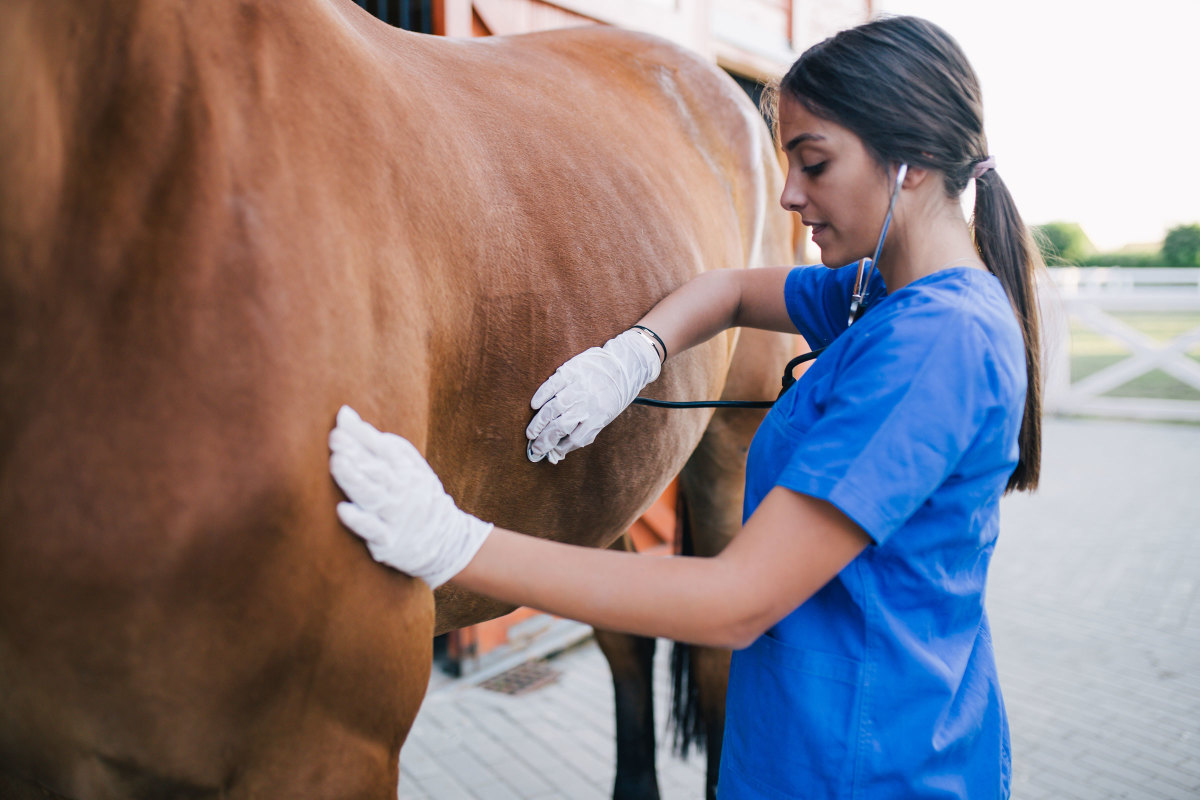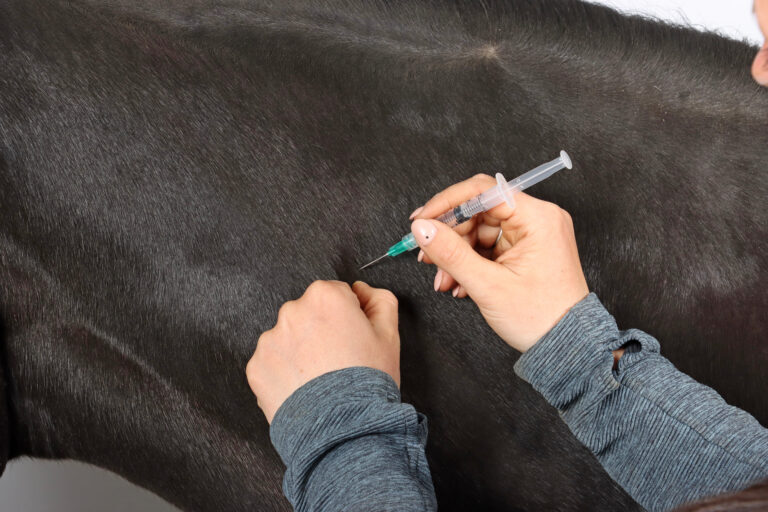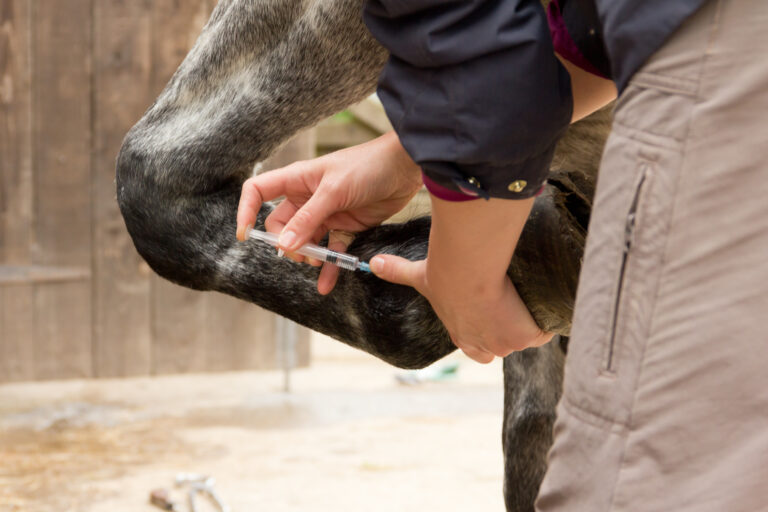
The following is a message from the Kentucky State Veterinarian’s office regarding COVID-19 and equine activities.
The public health threat presented by COVID-19, otherwise known as human coronavirus, is impacting all, and the equine industry is not immune to it.
Commissioner of Agriculture Dr. Ryan Quarles, State Veterinarian Dr. Bob Stout and I (Rusty Ford) are appreciative of the proactive steps our agricultural industries have taken thus far. Only by working together as we are can we help insure our own health and that of our industry. Protecting the health of ourselves, families, friends, employees and one another is of paramount importance.
As veterinarians, technicians, farm managers and horsemen, we are knowledgeable and familiar with biosecurity. We have all worked through disease outbreaks and quarantines, and we understand the basic principles to mitigating disease transmission in horses.
The environment we are in today, though, does necessitate applying and expanding these principles.
It is our mutual goal to see the standards defined below be adopted, implemented and practiced by all farms, practitioners and horsemen working together in our industry here in Kentucky.
The Kentucky State Veterinarian’s office has developed the following guidance to adjust equine activities to better protect public health during this time.
- Familiarize yourself and your employees about the Coronavirus Guidelines For America
- If you feel sick, stay home. Do not work. Contact your medical provider.
- If your children are sick, keep them at home. Do not send them to school. Contact your medical provider.
- If someone in your household has tested positive for the virus, keep the entire household at home. Do not go to work. Do not go to school. Contact your medical provider.
- If you are an older person, stay home and away from other people.
- If you are person with a serious underlying health condition that can put you at increased risk (for example, a condition that impairs your lung or heart function or weakens your immune system), stay home and away from other people.
- Limit individuals from unnecessarily congregating and maintaining a responsible social distance between individuals. Social distancing is the phrase of the month and is defined as a 6 foot perimeter/space between individuals.
- Please keep up to date with the Centers for Disease Control Guidance, which includes best practices during this time.
Dr. Stout and I (Rusty Ford, Equine Operations Consultant, Kentucky Office of the State Veterinarian) have been speaking with equine practitioners, farm managers, farm employees and other individuals in the industry to best define the path forward.
We have compiled the following best practices.
- Barns should be open to allow as much exchange of fresh air as possible.
- Equipment (leads, shanks, twitches, grooming tools, etc.) should be assigned to a barn and not passed to different individuals. This equipment should be cleaned and disinfected daily.
- Surfaces (desk, rails, gates etc.) having contact with individuals or equipment should be cleaned and disinfected frequently.
- Paperwork should be completed and submitted electronically.
- Communication should be via phone call, email or text.
- Veterinarians/Veterinary Assistants (and others who visit farms daily): Limit the number of individuals assisting the veterinarian. Veterinarians and other individuals who visit multiple facilities daily must understand and accept the additional steps they must take to avoid becoming contaminated and potentially transferring the contagion to other environments.
- Veterinarians, assistants and others should take their temperature 2x daily and not report to work if an elevated fever is detected. Any fever detected should be reported to a supervisor or manager.
- Veterinarians, assistants and others should wear gloves, coveralls and consider wearing a mask when deemed appropriate. These would be changed between farms and cleansed for reuse at end of day.
- When feasible, the vet assistant should be the individual holding/restraining the horse.
- Palpation—The manner by which you palpate or examine a mare is based on your assessment and familiarity with the individual animal. Ideally, the tail would be pulled and tied or the assistant wearing gloves would hold the tail. Alternatively, a farm employee could serve this role so long as he or she has the proper PPE while maintaining the defined social distance. Our objective is to minimize the number of individuals working in close proximity.
- The veterinarian assistant should cleanse the gloved hand or use new gloves moving horse to horse. The veterinarian should change or cleanse gloves between horses.
- Avoid transfer of paperwork—reports support that contagions are easily transferred to/from paper products. All administrative processes should be completed electronically when possible. This includes daily worksheets, payment.
- Farm Employees—there should be no physical contact between individuals and they should practice social distancing.
- Farm employees should check their temperatures 2x daily and if an elevated fever is detected they should report the fever to their supervisor and not interact with veterinarian.
- Where possible, employees working on the farm should be ‘consistently compartmentalized,’ meaning each individual’s day-to-day routine should be that they work with the same people daily, and do not work different shifts having interaction with new or different individuals.
- Ideally, there would be one farm employee per barn working with the veterinarian. This individual should be at or near the head of the horse and away from the veterinarian. The veterinarian or accompanying assistant should hold the tail.
- Foals requiring restraint will be attended to by the veterinarian’s assistant.
Implementing these practices, and any other action you can take to eliminate people from congregating in common areas will be beneficial and could be critical in our ability to continue business is as normal manner as possible. Dr. Stout and I (Rusty Ford) welcome any additional recommendations you might have.
For additional information regarding the COVID-19 status in KY please visit https://govstatus.egov.com/kycovid19.
Guidelines, updates and information offered by the Kentucky Department of Agriculture can be viewed at www.kyagr.com/covid19




